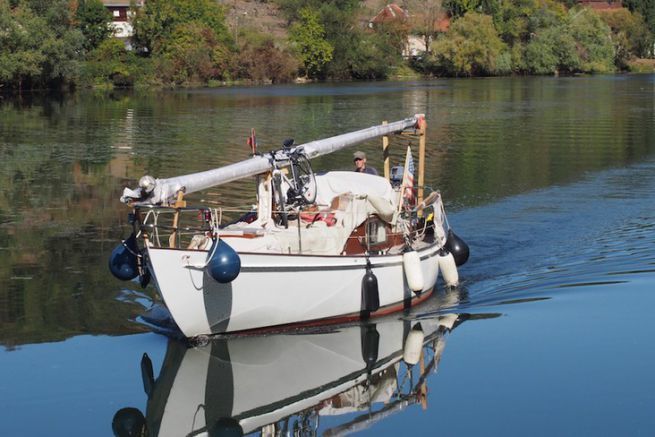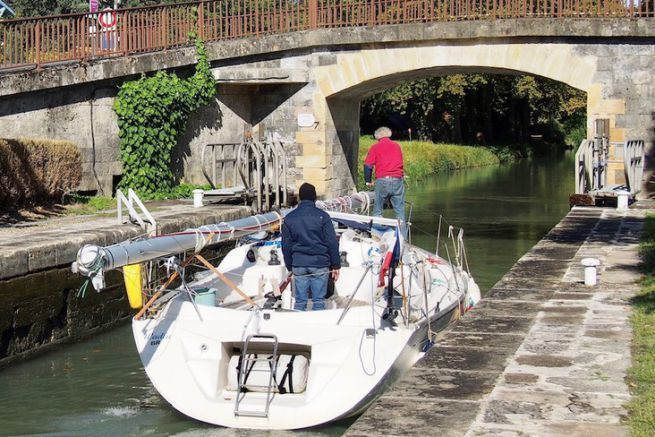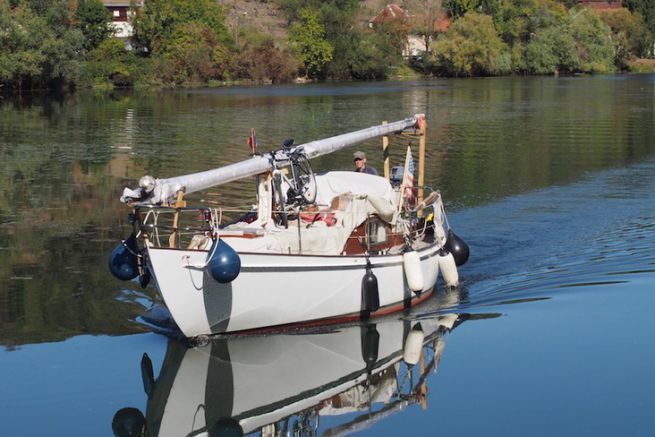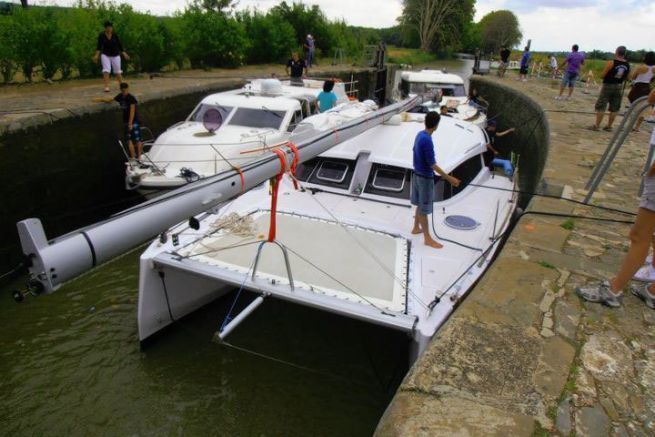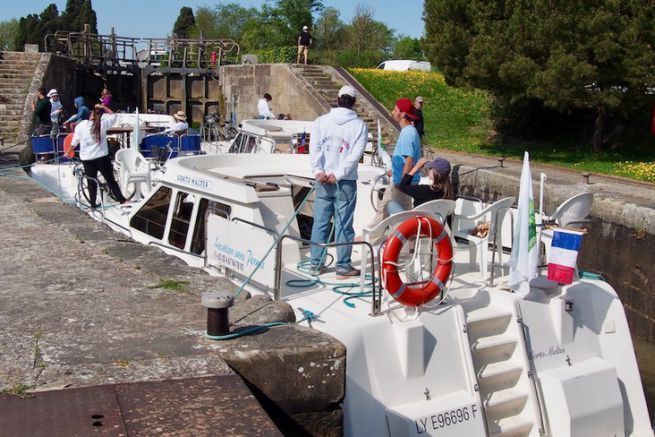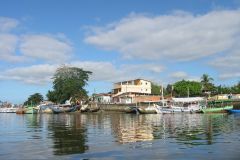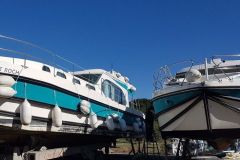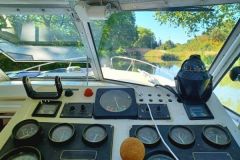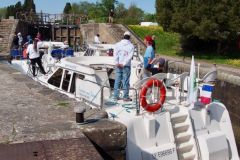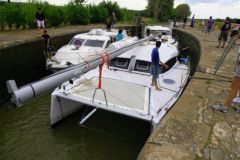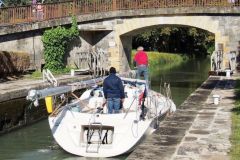Hull and deck protection!
The river environment is aggressive and dirty, if only along the lock walls. A good precaution consists in inserting, between the planking and the fenders, a 2 to 3 meters prelart (very solid tarpaulin), suspended from the fargue rails, at the height of the master beam.
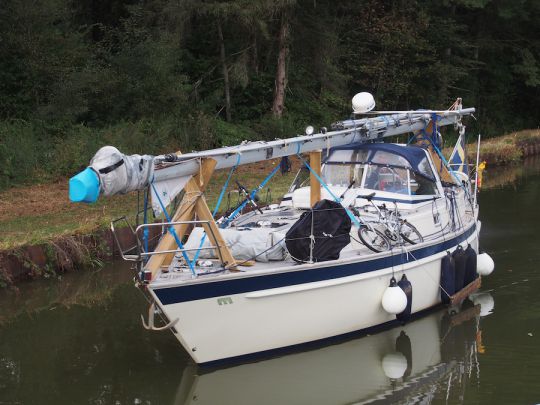
Fenders can never be big enough or numerous enough: put them everywhere, including at the ends of the boat! It is best if every other fender is placed horizontally so that it does not tend to rise. Take care of their placement: they will stay in place during the whole trip.
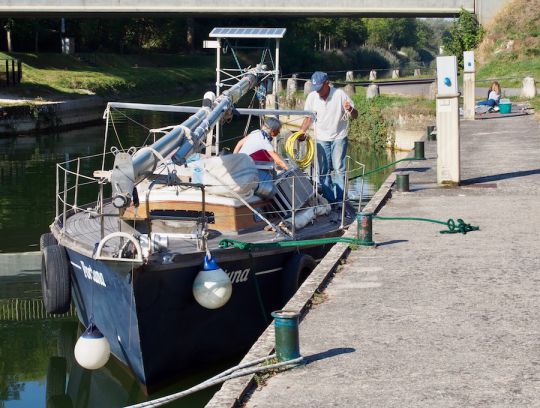
To avoid having your deck stained by mud from the towpaths or the mooring lines quickly filled with dirty water, don't hesitate to place doormats in the right places. Simple pieces of carpeting will also do the trick.
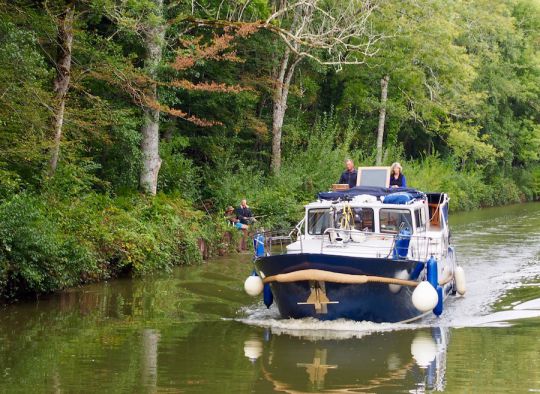
What to do with the mast?
A sailboat is naturally not well adapted to the river environment! The mast and other spars should be carefully wedged and secured on stable supports that are high enough not to interfere with deck movements and maneuvers.
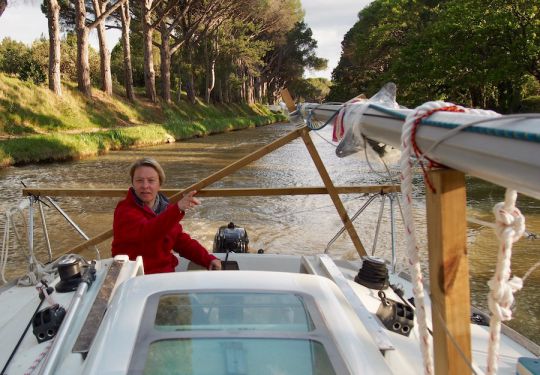
The aerials will be removed (windvane, anemometer, etc.) and the ends of the mast can be capped, as a precaution, with a bucket or a half fender. Wrapping film is an excellent way to protect the halyards and all the rigging.
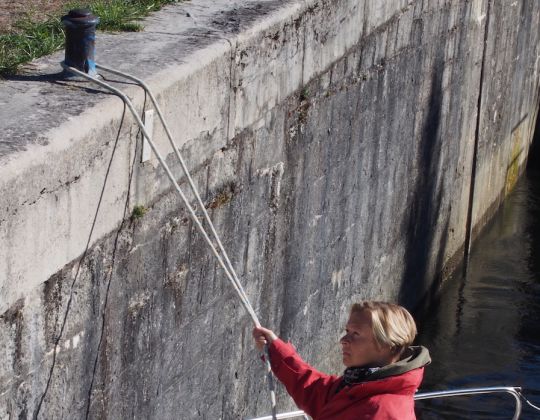
Long enough mooring lines
Make sure your hawsers are long enough to be passed in double at the locks (12 to 15 meters). Knowing that they will both get dirty and ragged, taking out a slightly used set is far from ridiculous. It is convenient, for wild stopovers, to have 2 stakes that can be planted in the bank with a sledgehammer to tie up. A second boat hook will not be superfluous either to help pass the mooring lines in the rising locks.
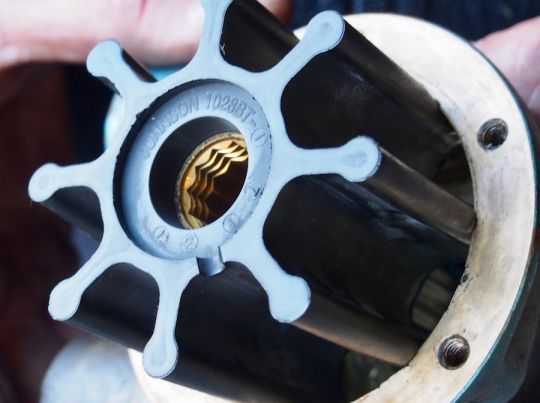
Avoid mechanical problems?
You can sail without too much thought on boats whose propeller is protected by a keel. The others will run more risk of suffering from the encounter of a submerged object, wood or plastic bag... You should not hesitate to pass the obstacle in neutral. In river navigation, no need for power. Units with powerful engines will have to idle for long hours, which may tend to clog them. Finally, the heavy water of rivers and canals puts the cooling system to a severe test and it is wise to have a replacement cooling turbine.
Generally speaking, keep in mind that you will be sailing far from any marine mechanic and that many spare parts common at sea will be difficult to obtain in the countryside! Take belt, turbine, fuel filter and propeller pins, which should already be part of your on-board tool kit.
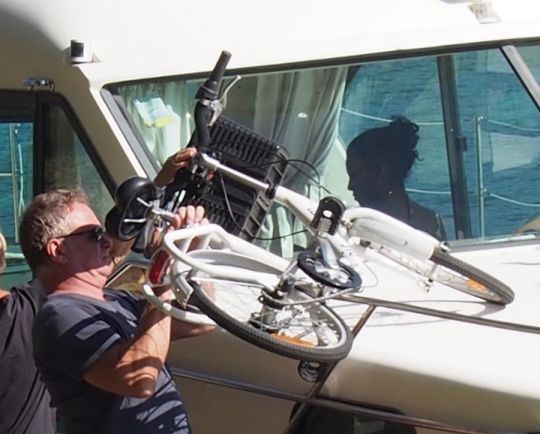
No gas station on the canal
There are few fuel stations on inland waterways. Plan ahead and take along jerry cans and a funnel. You can choose to dock near the pumps of a supermarket, as they exist on the outskirts of towns, or contact a river rental company that will probably agree to help you out. A wheeled cart can be very useful for refueling, as can a folding bicycle. Don't hesitate to embark on these river annexes!
